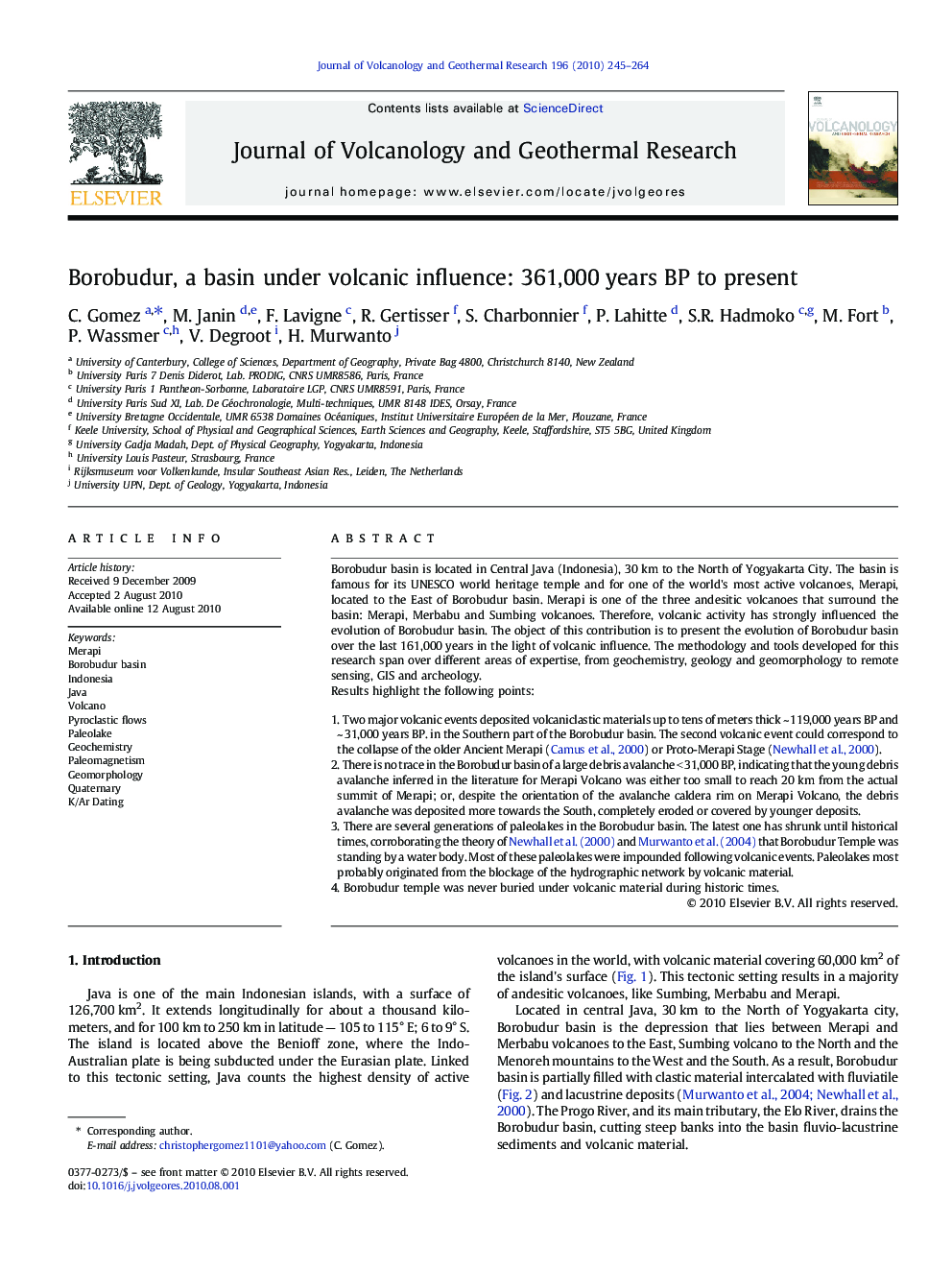| کد مقاله | کد نشریه | سال انتشار | مقاله انگلیسی | نسخه تمام متن |
|---|---|---|---|---|
| 4712948 | 1638414 | 2010 | 20 صفحه PDF | دانلود رایگان |

Borobudur basin is located in Central Java (Indonesia), 30 km to the North of Yogyakarta City. The basin is famous for its UNESCO world heritage temple and for one of the world's most active volcanoes, Merapi, located to the East of Borobudur basin. Merapi is one of the three andesitic volcanoes that surround the basin: Merapi, Merbabu and Sumbing volcanoes. Therefore, volcanic activity has strongly influenced the evolution of Borobudur basin. The object of this contribution is to present the evolution of Borobudur basin over the last 161,000 years in the light of volcanic influence. The methodology and tools developed for this research span over different areas of expertise, from geochemistry, geology and geomorphology to remote sensing, GIS and archeology.Results highlight the following points:1.Two major volcanic events deposited volcaniclastic materials up to tens of meters thick ~ 119,000 years BP and ~ 31,000 years BP. in the Southern part of the Borobudur basin. The second volcanic event could correspond to the collapse of the older Ancient Merapi (Camus et al., 2000) or Proto-Merapi Stage (Newhall et al., 2000).2.There is no trace in the Borobudur basin of a large debris avalanche < 31,000 BP, indicating that the young debris avalanche inferred in the literature for Merapi Volcano was either too small to reach 20 km from the actual summit of Merapi; or, despite the orientation of the avalanche caldera rim on Merapi Volcano, the debris avalanche was deposited more towards the South, completely eroded or covered by younger deposits.3.There are several generations of paleolakes in the Borobudur basin. The latest one has shrunk until historical times, corroborating the theory of Newhall et al. (2000) and Murwanto et al. (2004) that Borobudur Temple was standing by a water body. Most of these paleolakes were impounded following volcanic events. Paleolakes most probably originated from the blockage of the hydrographic network by volcanic material.4.Borobudur temple was never buried under volcanic material during historic times.
Research highlights
► Provide a chronology of the volcanic activity around Borobudur basin for the last 361,000 years;
► Assess the influence of volcanic activity on the geomorphological development of Borobudur basin;
► Provide information on the fluvio-lacustrine series controlled by volcanic activity;
► Inform on the geochemical signature of volcanic rocks deposited in Borobudur basin, in order to improve our understanding of past volcanic activity;
► Improve our understanding of volcanic hazards on Borobudur basin;
► Explain the geo-archeological setting of Borobudur Temple;
► Highlight the importance of a pluri-disciplinary approaches in a multi-scale analysis;
Journal: Journal of Volcanology and Geothermal Research - Volume 196, Issues 3–4, 1 October 2010, Pages 245–264